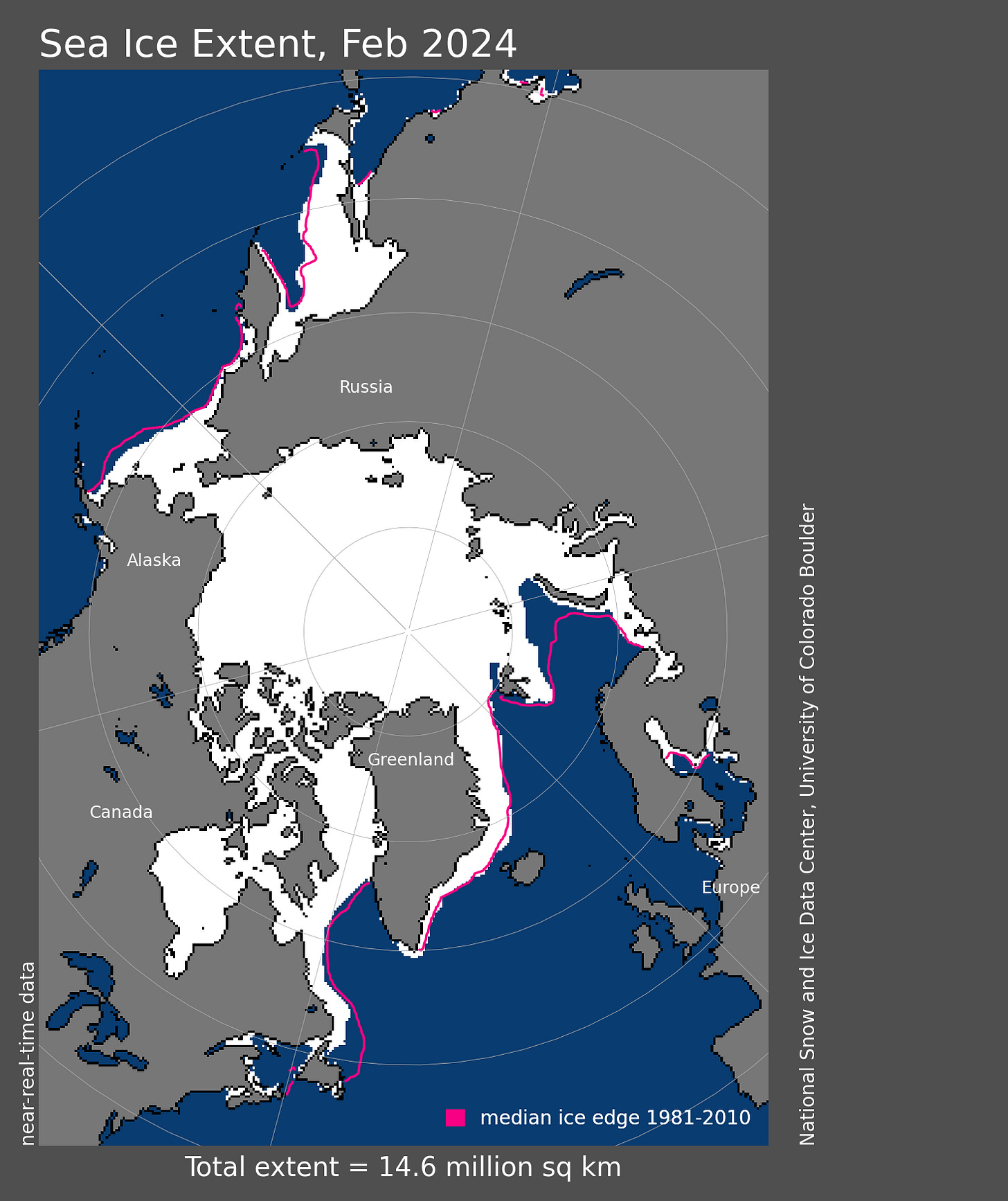Losing Ice
The trillions of tons of ice that moderates our climate is melting away
The Arctic Ocean will be ice-free in the summer of 2030, the director of the US National Snow and Ice Data Center told me nearly 14 years ago. It was a bold statement from a conservative scientist. At the time, the scientific consensus was ice-free summers around 2060 to 2070.
When I interviewed him in September of 2012, Arctic sea ice was half what it was 30 years ago, and was already affecting global weather patterns.
“We are now in uncharted territory,” he told me.
Need-to-Know: Ice-free Arctic likely in summer of 2025 or 2026
On Tuesday this week, a new analysis concluded an ice-free Arctic in late summer could be just two years away. And no later than 2030.
Ice-free is defined as still having chunks of ice floating around but the combined amount of ice adds up to less than one million square kilometers in area. That’s a tiny fraction of the 16 million square kilometers during the peak winter months in the 1980s.
Need-to-Know: The Earth’s air conditioner is melting away
The loss of sea ice is a major change in the Earth’s weather system since the Arctic has a critical role in regulating the climate. As I explained back in 2012:
When continent-sized areas of the Arctic Ocean flip from the all-white ice to dark blue, tremendous amounts of heat are absorbed from the 24-hour summer sun. When the bitter cold Arctic winter sets in over the next few weeks, all the heat in the ocean must be released into the atmosphere before ice can form again.
The Arctic will be ice-covered in winter for decades to come but what’s fundamentally changed is that every fall, unprecedented amounts of heat and water vapour will be released into the atmosphere.
The impacts are already being felt across the entire northern hemisphere. The loss of sea ice in recent years has been affecting weather patterns, recent research has shown. The all-important jet stream – the west-to-east winds that are the boundary between the cold Arctic and the warm mid-latitudes – is slowing down, moving north and become more erratic.
Need-to-Know: How our air conditioner could become a furnace
As the sea ice declines, Arctic temperatures increase, thawing more and more permafrost, which will release more climate-heating carbon and methane.
Permafrost is frozen soil, sediment and rock spanning 13 million square kilometres of the land in Alaska, Canada, Siberia and parts of Europe. It has twice the carbon that the atmosphere currently holds.
Need-to-Know: Hottest February Ever
It’s still winter in the Arctic so there’s still lots of ice, albeit the ice is thinner than it once was. However, while Arctic temperatures in February were below freezing, it was not nearly as cold as it should be. Not surprising since worldwide February was the warmest February in over 150 years.
Need-to-Know: Antarctica losing record amounts of sea ice
Meanwhile down in the Antarctic where summer is nearly over, the sea ice reached its second lowest ever. The last three years have seen a dramatic decline.
Need-to-Know: Mountain glaciers are melting away everywhere
The global loss of ice is even more dramatic for world’s 217,000 mountain glaciers. They have collectively lost almost 270 billion tonnes of ice every year for the past 20 years. That’s enough to drown the state of Michigan in 20 meters of water, or all of England in 40 meters of water. (This does not include the 540 billion tons of ice lost annually by the Greenland and Antarctic ice sheets.)
So what do you and I do knowing all this?
I go for a walk and enjoy being outside, taking great pleasure in watching clouds float by, the wind in the trees, or the sounds of rainfall.
You and I can talk about what we see outside, and how the seasons and the weather are changing.
We can acknowledge significant changes are underway and that we’re collectively responsible.
We can think about what these significant changes mean for our families, kids, grandkids, and coming generations.
You and I can take action that feels right for each of us, be it using our car less, joining a group, eating less meat, marching in a climate protest, running for office, growing vegetables, naturalizing our yards, or a 100 other things.
The important thing is to do something. Otherwise, our anxiety and worry about the future will consume us and that won’t help anyone.
Until next time, be safe.
Stephen





Thank you for this clear picture of our loss of sea ice. And for your final section on getting outside to help us to feel better and more able to take (even small) climate action.